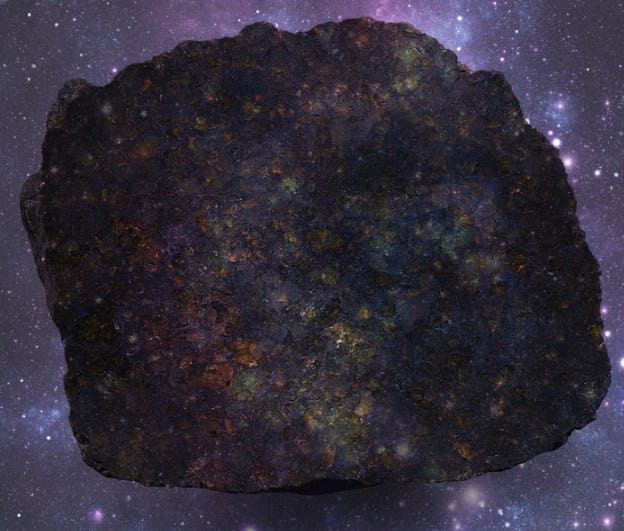
In their recent research, the team found that lonsdaleite occurs naturally in ureilite meteorites, a type of carbon-bearing space rock made up of silicates, sulfides, and metal. The mineral differs from usual diamonds in its crystal structure, which is hexagonal (ordinary diamonds have a cubic crystal structure.) Separate research earlier this year indicated that lonsdaleite’s structure makes it harder than other diamonds. The mineral has also been created in lab settings, but otherwise is vanishingly rare on Earth. Lonsdaleite has previously been found in meteorites, including the Diablo Canyon meteorite, a fragment found in Arizona’s famous Meteor Crater.

“This study proves categorically that lonsdaleite exists in nature,” said study co-author Dougal McCulloch, director of the Microscopy and Microanalysis Facility at RMIT in Australia, in a university release. Their research is published today in PNAS. They investigated 18 ureilite fragments using advanced electron microscopy, to better understand how the lonsdaleite within the space rocks formed. New research indicates that a rare form of diamond may originate in the burbling cores of distant worlds, arriving on Earth thanks to violent cosmic collisions.Īccording to a team of scientists in Australia, the mineral lonsdaleite-a type of diamond with a hexagonal crystal structure-can be found in meteorites that were likely created when an asteroid collided with a dwarf planet billions of years ago.

Weird Hexagonal Diamonds Came From an Asteroid-Dwarf Planet Smashup, The diamonds’ unusual crystal structure may make them harder than ordinary diamonds. Never-before-seen Diamond Crystal Structure Found Inside A Meteorite.


 0 kommentar(er)
0 kommentar(er)
